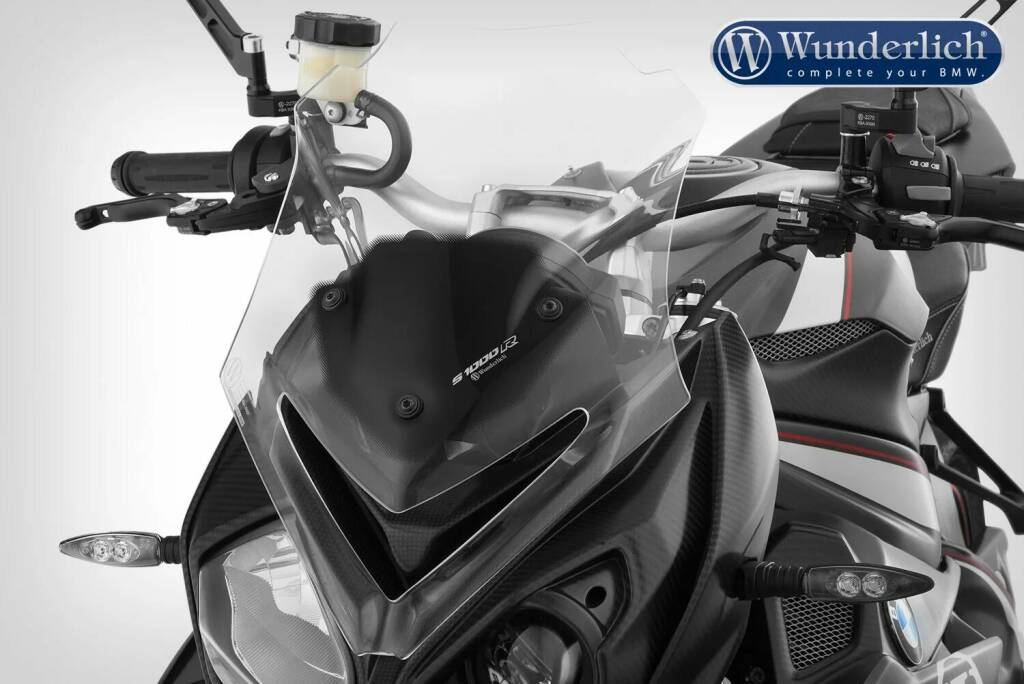
There are a wide variety of motorcycle accessories available, ranging from functional to cosmetic. Here are some common motorcycle accessories:
- Helmets: A helmet is a crucial safety accessory for any motorcycle rider. There are many types of helmets available, including full-face, open-face, and modular.
- Riding Gear: This includes gloves, jackets, boots, and pants designed specifically for motorcycle riding. These accessories offer protection from the elements and in case of an accident.
- Luggage: Motorcycle luggage includes saddlebags, tank bags, and tail bags. These are used for carrying personal items, tools, and other essentials.
- Lighting: Additional lighting can be added to a motorcycle to increase visibility and safety. This includes headlights, brake lights, and turn signals.
- Windshields: Windshields help protect riders from wind and debris. They come in various sizes and shapes to fit different types of motorcycles.
- Exhaust Systems: Upgraded exhaust systems can improve the performance of a motorcycle and change its sound.
- Phone Mounts: Phone mounts can be attached to a motorcycle’s handlebars to allow riders to easily access their phone for navigation or music.
Helmets:
Helmets are not just an accessory for motorcycles, they are a crucial safety gear that every rider should wear. Helmets are designed to protect the rider’s head from impact during a crash or fall, and they have been proven to be extremely effective in reducing the severity of head injuries.
In many countries, wearing a helmet while riding a motorcycle is mandatory by law, and failure to do so can result in fines or even imprisonment. Even in countries where there is no legal requirement to wear a helmet, it is strongly recommended that riders do so for their own safety.
There are many different types of helmets available, each with its own features and benefits. Full-face helmets offer the most protection, covering the entire head and face, while open-face helmets offer less protection but greater visibility and ventilation. Modular helmets combine the benefits of both full-face and open-face helmets, allowing the rider to switch between the two modes.
When choosing a helmet, it’s important to consider factors such as fit, comfort, and ventilation in addition to safety features. It’s also a good idea to choose a helmet that meets the safety standards set by organizations such as the Department of Transportation (DOT) in the US or the European Union’s ECE 22.05 standard.
Riding Gear:
Riding gear is not just an accessory for motorcycles, it’s an essential part of motorcycle safety equipment. Proper riding gear can help protect the rider from injury in case of an accident, as well as shield them from the elements during long rides.
There are many different types of riding gear available, each designed to provide protection and comfort while riding. Some common types of riding gear include:
- Jackets: Motorcycle jackets are designed to protect the rider’s upper body from abrasion and impact during a fall. They are typically made of leather or textile materials and often come with armor inserts in the shoulders, elbows, and back for added protection.
- Pants: Motorcycle pants offer similar protection to jackets, covering the rider’s legs from the waist down. They are available in leather or textile materials and may also come with armor inserts.
- Gloves: Motorcycle gloves are designed to protect the rider’s hands in case of a fall or impact. They are typically made of leather or textile materials and may come with extra padding or armor in the knuckles and palms.
- Boots: Motorcycle boots are designed to protect the rider’s feet and ankles from impact and abrasion. They are typically made of leather or synthetic materials and may come with extra padding or armor in the toes and heels.
When choosing riding gear, it’s important to consider the level of protection offered, as well as the fit and comfort of the gear. It’s also a good idea to choose gear that is designed specifically for motorcycle riding, as regular clothing may not provide adequate protection.
Luggage:
Luggage is an important accessory for motorcycles, as it allows riders to carry their personal belongings, tools, and other essentials while on the road. There are many types of motorcycle luggage available, each designed for different purposes and types of motorcycles.
Some common types of motorcycle luggage include:
- Saddlebags: Saddlebags are attached to the sides of the motorcycle and are designed to carry larger items such as clothes, camping gear, or tools. They come in various shapes and sizes and can be made of leather or synthetic materials.
- Tank bags: Tank bags are attached to the tank of the motorcycle and are designed to carry smaller items such as phones, wallets, or cameras. They are usually made of textile materials and come with magnetic or strap attachments.
- Tail bags: Tail bags are attached to the rear of the motorcycle and are designed to carry smaller items such as water bottles or snacks. They come in various shapes and sizes and can be made of textile materials or hard plastic.
When choosing motorcycle luggage, it’s important to consider the size and weight of the luggage in relation to the motorcycle, as well as the type of riding that will be done. It’s also important to make sure that the luggage is securely attached to the motorcycle and will not shift or become unstable during use.
Lighting:
Lighting is an important accessory for motorcycles, as it can enhance visibility and safety for both the rider and other motorists. There are many types of motorcycle lighting available, each designed for different purposes and preferences.
Some common types of motorcycle lighting include:
- Headlights: Headlights are required by law and are essential for visibility while riding at night or in low-light conditions. They can also be upgraded to brighter or more efficient bulbs to improve visibility.
- Auxiliary lights: Auxiliary lights are additional lights that can be added to the motorcycle for enhanced visibility, particularly in off-road or adventure riding. They can be mounted on the front or rear of the motorcycle and can come in various shapes and sizes.
- Turn signals: Turn signals are required by law and are essential for indicating a change in direction while riding. They can be upgraded to brighter or more visible bulbs or LED lights.
- Brake lights: Brake lights are required by law and are essential for indicating a change in speed or stopping while riding. They can also be upgraded to brighter or more visible bulbs or LED lights.
When choosing motorcycle lighting, it’s important to consider the type of riding that will be done, as well as the legality of the lighting modifications in your area. It’s also important to make sure that the lighting is properly installed and functioning correctly to ensure maximum visibility and safety.

Windshields:
Windshields are a popular accessory for motorcycles, as they can provide protection from wind, rain, and debris while riding. There are many types of windshields available, each designed for different purposes and preferences.
Some common types of motorcycle windshields include:
- Tall windshields: Tall windshields offer the most protection from wind and debris, particularly https://www.buydo.eu at higher speeds. They can be made of various materials such as plastic, acrylic, or polycarbonate and come in different shapes and sizes.
- Short windshields: Short windshields offer less protection from wind and debris but can provide a sleeker look and greater visibility. They are often made of the same materials as tall windshields.
- Tinted windshields: Tinted windshields can provide added protection from glare and UV rays, particularly during long rides in bright sunlight.
- Adjustable windshields: Adjustable windshields can be tilted or raised and lowered to provide the optimal level of protection and visibility for the rider.
When choosing a motorcycle windshield, it’s important to consider the type of riding that will be done, as well as the rider’s height and preferences. It’s also important to make sure that the windshield is properly installed and does not impede the rider’s vision or interfere with the operation of the motorcycle.
Exhaust Systems:
Exhaust systems are a popular accessory for motorcycles, as they can improve the performance, sound, and appearance of the motorcycle. There are many types of motorcycle exhaust systems available, each designed for different purposes and preferences.
Some common types of motorcycle exhaust systems include:
- Slip-on exhausts: Slip-on exhausts are designed to replace the stock muffler of the motorcycle, providing a louder and more aggressive exhaust note. They can also improve the airflow of the motorcycle, resulting in improved performance.
- Full exhaust systems: Full exhaust systems replace the entire exhaust system of the motorcycle, including the headers and mid-pipes. They can provide significant improvements in performance and sound, but are generally more expensive than slip-on exhausts.
- High-performance exhaust systems: High-performance exhaust systems are designed to provide maximum performance gains, often at the expense of noise levels. They are often made of lightweight materials such as titanium or carbon fiber and can be significantly more expensive than other exhaust systems.
- Custom exhaust systems: Custom exhaust systems are designed and fabricated specifically for the motorcycle, providing a unique and personalized look and sound. They can be made of various materials and can be designed to meet specific performance goals.
When choosing a motorcycle exhaust system, it’s important to consider the type of riding that will be done, as well as the noise regulations in your area. It’s also important to make sure that the exhaust system is properly installed and does not interfere with the operation of the motorcycle or create safety hazards.
Phone Mounts:
Phone mounts are a useful accessory for motorcycles, as they allow riders to safely and securely mount their smartphones while riding. This can be particularly useful for navigation, music playback, and communication while on the road. There are many types of motorcycle phone mounts available, each designed for different purposes and preferences.
Some common types of motorcycle phone mounts include:
- Handlebar mounts: Handlebar mounts are the most common type of motorcycle phone mount, as they allow riders to mount their phone directly on the handlebars of the motorcycle. They can be adjustable to fit various phone sizes and can come in different materials such as plastic, aluminum, or steel.
- Stem mounts: Stem mounts attach to the stem of the motorcycle, providing a more stable and secure mounting location than handlebar mounts. They can also be adjustable to fit various phone sizes and can come in different materials.
- Fork mounts: Fork mounts attach to the fork of the motorcycle, providing a unique mounting location that can be particularly useful for off-road or adventure riding. They can also be adjustable to fit various phone sizes and can come in different materials.
- Tank mounts: Tank mounts attach to the gas tank of the motorcycle, providing a mounting location that is easily accessible while riding. They can be particularly useful for navigation or communication purposes, but may not be suitable for all types of motorcycles.
When choosing a motorcycle phone mount, it’s important to consider the type of riding that will be done, as well as the size and weight of the phone being used. It’s also important to make sure that the phone mount is properly installed and does not interfere with the operation of the motorcycle or create safety hazards.

0 Comments for “Motorcycle Accessories”